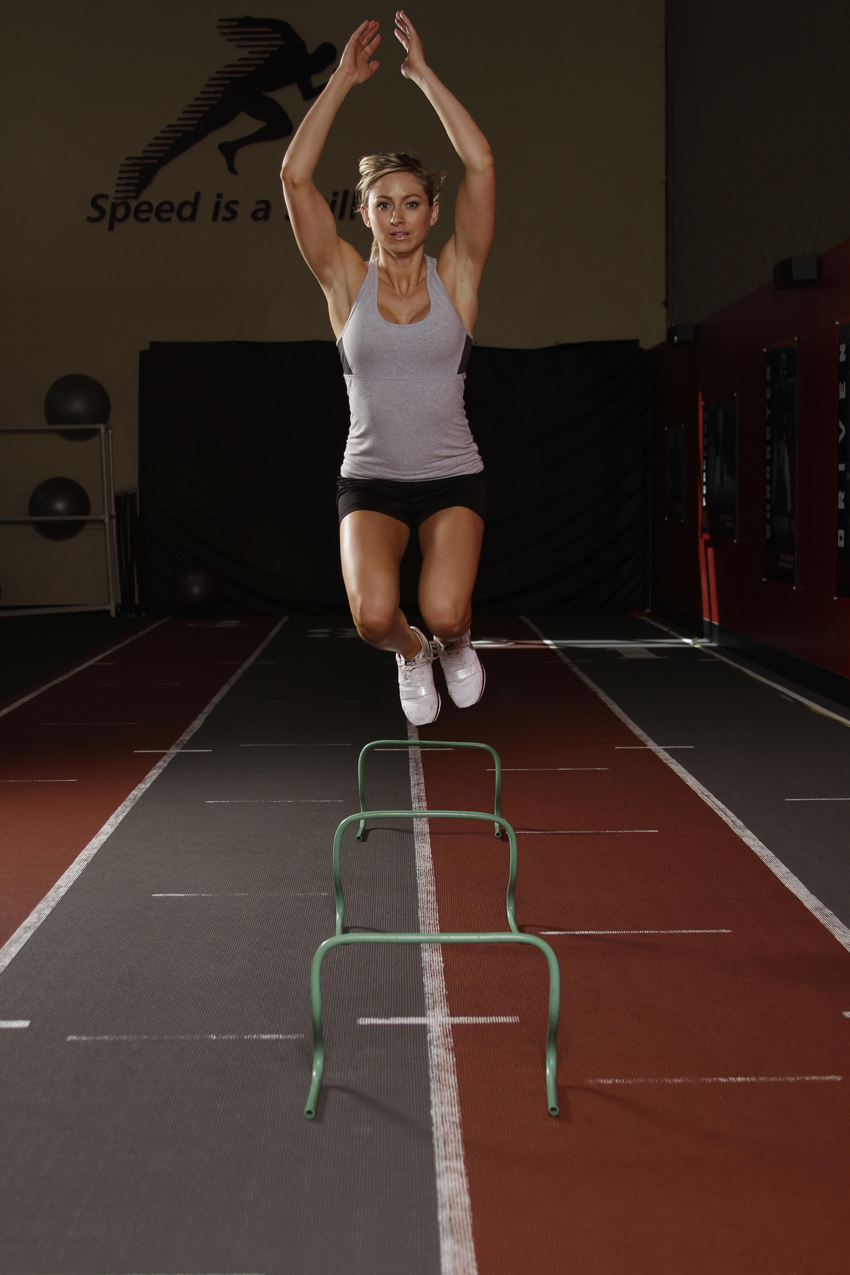March 24
|
Plyometrics: The Long and Short of it |
Plyometrics, or plyos, are exercises that involve quick explosive movements that allow the muscle(s) to reach the maximal amount of force in the shortest amount of time. Having your muscles reach maximum force quickly sounds appealing to all athletes, which is why plyometrics have had a huge influence to #TrainBIG since they were brought into the mainstream exercise scene in the 80’s.
The key component of plyometrics is called the Stretch Shortening Cycle (SSC). To summarize while using the example of a depth jump, the muscles and tendons lengthen and stretch upon impact (eccentric), creating a buildup of energy which is then released in a muscle shortening motion (concentric) that allows you to jump up again.
I’ll leave it up to you to look up eccentric and concentric muscle action if those terms are unfamiliar to you, because I want to spend the rest of the Schaudt Out describing a 3rd middle phase of the SSC that is incredibly important for the development of speed: Amortization
Simply put, amortization is the “dead space” between the eccentric and concentric action of a muscle movement. The longer the dead space is, the longer it takes to apply force to a surface and the slower the movement is.
Plyometrics are aimed at shortening this “dead space” but there are ways that you can do it incorrectly.
The energy buildup in the eccentric and amortization phase of a muscle action can be lost if the action takes too long. Plyometric expert Jim Radcliffe frequently uses the example of a super ball vs a tomato. Tomatoes don’t have amortization and neither will you if you take too long moving from eccentric to concentric muscle action.
Many people generally associate plyometrics with lower body but you can also elicit SSC in the upper body too! Medicine ball throws are my top recommendation for upper body plyometrics. Now make like a super ball and bounce!
Schaudt is out!

